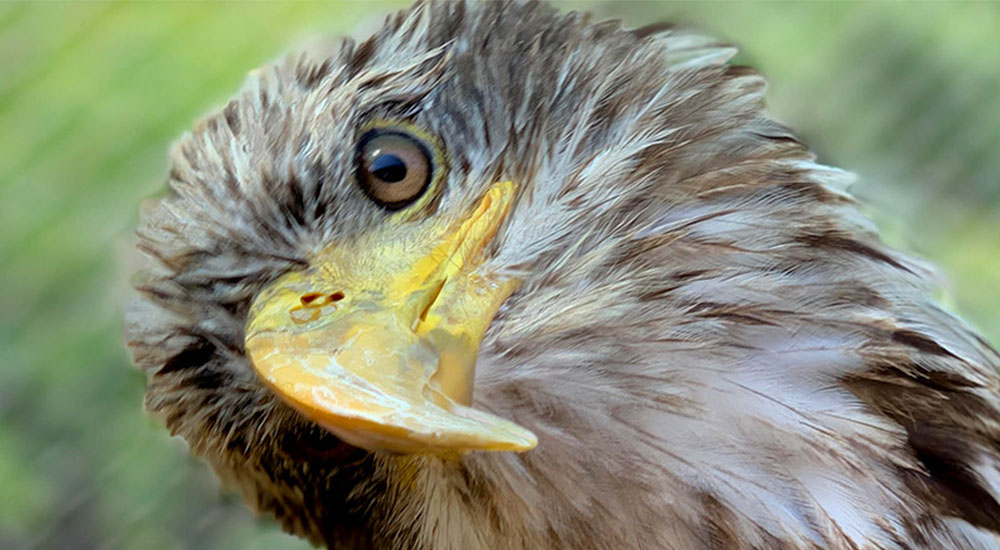SCOUT
Species: Haliaeetus leucocephalus, Bald Eagle • Hatch Year: 2016 (estimated) • Sex: Female • Disability: Avian Pox / failed to thrive after rehab and release
Scout arrived at the American Eagle Foundation in July 2017. She had been treated earlier that year at a rehabilitation center in Florida for avian pox, a virus that left her covered in sores/lesions. Post treatment she was released back into the wild but failed to thrive. She was found again, malnourished and begging for food at which point she was deemed non-releasable and found a permanent home at the AEF.
Scout was estimated to be just over 1 year old at the time of her arrival at the AEF. She has a slightly scarred beak that is a result from the avian pox and her beak requires a little extra care to keep it growing straight. One of Scout’s favorite activities is shredding cardboard boxes!
ABOUT THIS SPECIES
Bald Eagles were placed at the center of the Great Seal of the United States in 1782! Since then, they have served as the pride of America’s skies and the symbol of all that America stands for.
Bald Eagles obviously aren’t bald! “Bald” in this sense refers to an Middle English word that means “white headed.” When eagles fledge the nest at between 10 and 13 weeks of age, they are primarily all brown. An Eagle gets its full white head and tail feathers and yellow beak and eyes at around four to five years of age.
Bald Eagles typically mate for life. Usually, they will only look for a new mate if their faithful companion dies, but sometimes a new mate is chosen in a territorial fight over a nest.
In building a nest, Bald Eagles will choose a ‘super-canopy’ tree—one rising above the rest— near to water, with sturdy limbs and a commanding view of the surrounding terrain. Typical nest heights are 50-125 feet high. They make use of twigs, grasses, soft mosses and feathers in making their nests and normally return to the same nest each year during breeding season and add new materials to it. A new eagle pair’s nest usually measures about five feet in width and two feet in depth. As they add to it year after year, however, it can reach widths of over ten feet and weigh up to a ton or more. On the Channel Islands, where large trees are very scarce, Bald Eagles have built their nests on cliffs; and, in some coastal areas of Alaska and Canada where there are few tall trees, Bald Eagles will nest on the ground, using whatever materials are available.

